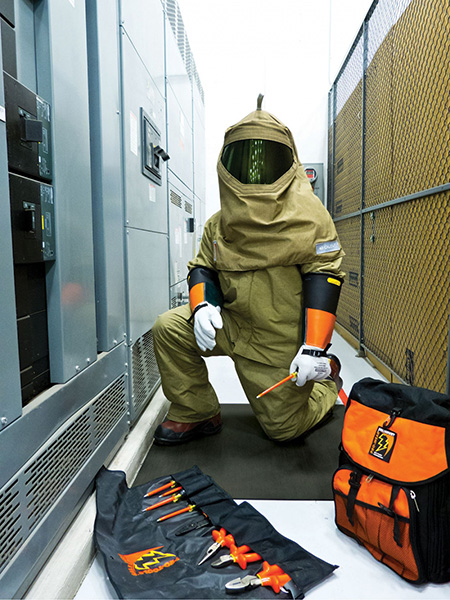Arc Flash
The purpose of an arc flash analysis is to determine the incident energy to which employees could be exposed to when working on or near energized electrical equipment.
Factors that affect the arc flash hazard are:
- The value of short circuit current/corresponding arcing fault current.
- Over-current device clearing time at the associated fault current.
- Distance from the arc flash.
The completed Arc Flash Analyses will contain the incident energy associated with various fault current scenarios. The Electrical Engineer will pick the worst case of all the fault current scenarios.
Prior to labeling the electrical equipment, all breakers must be set and fuse types verified to conform to the "Protective Device Settings Report". Once the breakers are properly adjusted and fuse types confirmed, the calculated worst case flash labels may be installed.
The above mentioned electrical studies are a complex process that requires the electrical engineer to make engineering judgments, to understand numerous electrical testing standards, to fully understand the NEC and incorporate changes where necessary, and to properly utilize SKM Power Tools Electrical Engineering Software.
Arc Flash Analysis is an evolving science. Properly following the analysis will prevent electrical workers from obtaining second-degree burns.
Per IEEE 1584, the potentially hazardous effects of molten metal splatter, projectiles, pressure impulses, and toxic arc by-products have not been considered. PPE is the last line of defense. The protection is not intended to prevent all injuries but to mitigate the impact of an arc flash upon the individual.


